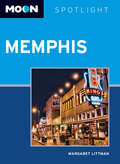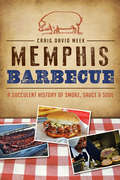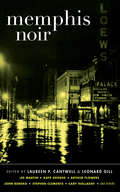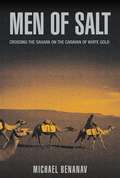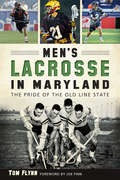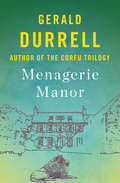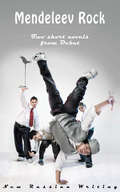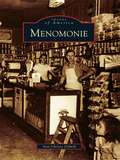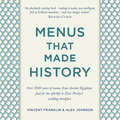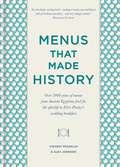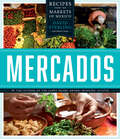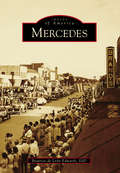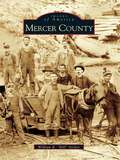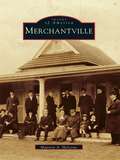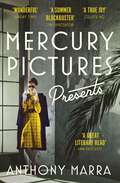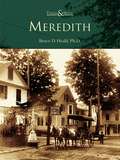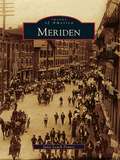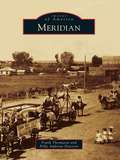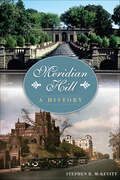- Table View
- List View
Memphis
by Margaret Littman'Moon Spotlight Memphis' is an 80-page compact guide covering the ins and outs of the Home of the Blues. Tennessee resident Margaret Littman offers her firsthand advice on must-see attractions, as well as maps with sightseeing highlights, so you can make the most of your time. This lightweight guide is packed with recommendations on entertainment, shopping, recreations, accommodations, food, and transportation, making navigating this musical mecca uncomplicated and enjoyable. This Spotlight guidebook is excerpted from 'Moon Tennessee. '
Memphis Barbecue: A Succulent History of Smoke, Sauce & Soul (American Palate)
by Craig David MeekThe lifelong Memphian and food blogger “examines the history of the city one plate of barbecue at a time” (High Ground).The city’s blues and soul music have lifted spirits, while barbecue has been a serious business ever since pork first entered the culinary landscape of Memphis with Spanish explorer Hernando de Soto, who brought the New World its first herd of pigs. Succulent pulled pork and ribs have become part of the fabric of life in Bluff City, and today they are cooked up in kitchens ranging from the internationally acclaimed, like Corky’s, to the humblest of roadside dives. Told through the history of its barbecue is the story of the city of Memphis, from legendary joints like Leonard’s Barbecue, where Elvis Presley hosted private parties, to lesser-known places like William’s Bar-B-Q in the West Memphis, Arkansas neighborhood where wild, late-night blues juke joints served as a red-light district across the river from Beale Street in the 1950s and ’60s. Sink your teeth into this rich history chock-full of interviews and insights from the city’s finest pitmasters and ’cue gurus who continue the long tradition of creating art with meat and flame.“There are some amazing moments in Memphis Barbecue—like Jim Neely speaking quite frankly about his TV celebrity nephew Pat Neely and John Willingham’s widow remembering the barbecue legend’s last day.” —Memphis Flyer
Memphis Noir (Akashic Noir)
by Leonard Gill Laureen Cantwell"A remarkable picture of contemporary Memphis emerges in this Akashic noir volume...Something for everyone."--Publishers Weekly"Voodoo, ghosts, guns, hatred, jealousy and greed play their part here. There is no place for weakness here."--Journey of a BooksellerAkashic Books continues its groundbreaking series of original noir anthologies, launched in 2004 with Brooklyn Noir. Each story is set in a distinct neighborhood or location within the city of the book.Featuring brand-new stories by: Richard J. Alley, David Wesley Williams, Dwight Fryer, Jamey Hatley, Adam Shaw, Penny Register-Shaw, Kaye George, Arthur Flowers, Suzanne Berube Rorhus, Ehi Ike, Lee Martin, Stephen Clements, Cary Holladay, John Bensko, Sheree Renée Thomas, and Troy L. Wiggins.From the introduction by Laureen P. Cantwell & Leonard Gill:"A city equal parts darkness and hope. A scarred city. An often violent one. But a resilient city too.That's our Memphis.Like many cities, we have a namesake--in Egypt, Men-nefer became Menfe became Memphis, enduring and beautiful, on the banks of the Nile. Centuries later, another continent, another people, another river: Memphis, Tennessee, the soul of the Mississippi Delta, was formed. We are a place born of history, inhabited as much by memory as by the living--the past and present inextricably and inescapably linked....Memphis is marvels and misfits--two-faced and unabashedly so. We are Memphis, and this is our noir."
Men of Salt: Crossing the Sahara on the Caravan of White Gold
by Michael BenanavIn fact, there was no road at all, just an endless stretch of desert sand called "The Land of Terror" by the nomads who cross it, and described by author Michael Benanav with humor and startling insight in this compelling narrative. Benanav joined what is known as the Caravan of White Gold -- so-called because the salt was once literally worth its weight in gold -- on its mission into the deadly heart of the Sahara to haul back gleaming slabs of solid salt for sale at market. He'd been seized by the idea after coming across an article about the dying days of the caravan: "It was that feeling known by those of us who don't so much take journeys as are taken by journeys: hearing the call of a particular place for a particular purpose that will not be denied. It was the kind of trip I was born to take." Following his amused guide, Walid, Benanav lived for weeks among the camel drivers as they traveled eighteen hours a day for nearly a thousand miles without a map or landmark in sight, through sandstorms and searing heat. Along the way, he learned how to care for and ride camels, became a medic to injured salt miners, and grappled with the dilemmas of cultural extinction created by the ever-widening impact of globalization. MEN OF SALT is a revelation, introducing an important new voice to the tradition of travel literature.
Men's Lacrosse in Maryland: The Pride of the Old Line State (Sports)
by Tom FlynnSpring in Maryland means one thing: lacrosse. As much a part of the state as crab cakes and the Chesapeake Bay, lacrosse is king at every level, from youth rec and club to high school, college and the pros. Since the state first fielded teams in the 1870s, Marylanders have played with a unique combination of finesse, speed and passion. The "Maryland style" of play built a long line of national powerhouses at all levels. With extensive research and dozens of photographs, journalist Tom Flynn traces the long history of the sport in Maryland from its Native American roots to its first arrival in the state and on to the modern highlights. Fans will rediscover their many past champions and gain a glimpse of teams that promise to elevate the sport's status as the pride of the Old Line State.
Men, Masculinities, Travel and Tourism
by Thomas Thurnell-Read Mark CaseyMen, Masculinities, Travel and Tourism draws together established and emerging academics that have a key interest in men, masculinity, travel and tourism. Through the chapters collected in this volume the reader will be exposed to cutting edge research and writing that offer global and local perspectives within these fields.
Menagerie Manor: A Zoo In My Luggage, The Whispering Land, And Menagerie Manor (The Zoo Memoirs #3)
by Gerald DurrellThe beloved naturist and author of My Family and Other Animals shares the pleasures and pitfalls of opening a zoo on the English Channel Island of Jersey. Spurred by his passion for animals and a lifelong dream, in the spring of 1959 Gerald Durrell opened the Jersey Zoo—now known as the Durrell Wildlife Park—on the grounds of an old manor house. The menagerie provided a safe habitat for rare and endangered species and exposed its human visitors to the wonders of nature. Dealing with escapee animals and overdrawn bank accounts, Durrell soon discovered that owning and operating a fledgling zoo was no easy task. But despite the setbacks, these charming, often hilarious stories make clear that, for Durrell, ensuring the park&’s success and helping the creatures he loved so dearly was worth any obstacle. This ebook features an illustrated biography of Gerald Durrell including rare photos from the author&’s estate.
Mend the Living: WINNER OF THE WELLCOME BOOK PRIZE 2017
by Maylis de KerangalWinner of the Wellcome Book Prize 2017.Longlisted for the Man Booker International Prize 2016. Now a major French film, REPARER LES VIVANTS/HEAL THE LIVING, directed by Katell Quillevere and starring Emmanuelle Seigner.A twenty-four-hour whirlwind of death and life.In the depths of a winter's night, the heart of Simon Limbeau is resting, readying itself for the day to come. In a few hours' time, just before six, his alarm will go off and he will venture into the freezing dawn, drive down to the beach, and go surfing with his friends. A trip he has made a hundred times and yet, today, the heart of Simon Limbeau will encounter a very different course.But for now, the black-box of his body is free to leap, swell, melt and sink, just as it has throughout the years of Simon's young life.5.50 a.m.This is his heart.And here is its story.Translated from the French by Jessica Moore
Mendeleev Rock
by Andrei Kuzechkin Pavel KostinThese two novels by Debut Prize finalists present typical provincial towns in central Russia and a gallery of modern-day types: radically minded youths, ruthless thugs, drunken intellectuals, the local elite, and failed fortune seekers. The heroes are yearning for faraway glamorous cities and trying to find their identities. They suffer through various weird misadventures, but for many readers their tales may be a survival guide. A vivid portrait of the younger generation in today's Russia: stunned by their first painful contacts with harsh reality. The authors will present the book at BEA 2011 in New York.
Menomonie
by Ann Christy DybvikHistoric Menomonie lies alongside the beautiful Red Cedar River in western Wisconsin. A town with a rich, diverse history, it grew to become home to a massive lumbering era spearheaded by four innovative pioneer men whose heritage continues to identify the city. Lumbering gave way to the establishment of respected sleigh, brick, piano, and cigar factories in the early 1900s. Throughout these eras, up until the present, inventors, artists, educators, philanthropists, and farmers all put their stamp on the town. Home to the popular Red Cedar Trail, it also is the site of the Mabel Tainter Theatre, an ornate historic building constructed to memorialize a young daughter. Dairy farms still pepper the hillsides, small businesses line Main Street, farmers still market products in the park, and Stout University leads the way in education; and always the arts abound in the nooks and valleys that comprise Menomonie."
Mentor
by Thomas G. Matowitz Jr.One of the first towns settled in the lands once known as Connecticut's Western Reserve, Mentor continues to thrive more than two centuries later. After starting out in 1797 as a sparsely populated wilderness outpost with only a handful of permanent residents, Mentor has transformed into a vibrant 21st-century city. The earliest settlers began the great task of felling trees, clearing land, and establishing farms to provide themselves with food and shelter during the area's harsh winters. Through the 19th century, Mentor's growth was slow but steady. Its citizens not only included hardworking farmers and artisans, but wealthy turn-of-the-20th-century Cleveland business leaders, a Civil War Medal of Honor recipient, and the 20th president of the United States, James A. Garfield. Once known for extensive farmland, grand country estates, interurban railroads, and some of the finest nurseries in the country, Mentor is now a diverse community with more than 50,000 residents and a strong and burgeoning local economy.
Menus that Made History: Over 2000 years of menus from Ancient Egyptian food for the afterlife to Elvis Presley's wedding breakfast
by Alex Johnson Vincent Franklin'An absolutely riveting book - reading it makes you intelligent, full of brilliant anecdotes - and very hungry indeed.' - Richard Curtis 'This brilliantly conceived and well-researched book is a source of real delight.' - Dr Annie Gray, BBC Radio 4's The Kitchen Cabinet 'Superbly written, a complete joy to read, and just about the perfect present for anyone even vaguely interested in food.' - Mark Diacono'A gastronomic delight. You can savour it a course at a time, or you may consume the whole banquet in one sitting. It's delicious either way - utterly scrumptious, in fact!' - Mike LeighThis fascinating miscellany of menus from around the world will educate as well as entertain, delighting both avid foodies and the general reader.Each menu provides an insight into its particular historical moment - from the typical food on offer in a nineteenth-century workhouse to the opulence of George IV's gargantuan coronation dinner. Some menus are linked with a specific and unforgettable event such as The Hindenburg's last flight menu or the variety of meals on offer for First, Second and Third Class passengers on board RMS Titanic, while others give an insight into sport, such as the 1963 FA Cup Final Dinner or transport and travel with the luxury lunch on board the Orient Express. Also included are literary occasions like Charles' Dickens 1868 dinner at Delmonicos in New York as well as the purely fictional and fantastical fare of Ratty's picnic in The Wind in the Willows.
Menus that Made History: Over 2000 years of menus from Ancient Egyptian food for the afterlife to Elvis Presley's wedding breakfast
by Alex Johnson Vincent Franklin'An absolutely riveting book - reading it makes you intelligent, full of brilliant anecdotes - and very hungry indeed.' - Richard Curtis 'This brilliantly conceived and well-researched book is a source of real delight.' - Dr Annie Gray, BBC Radio 4's The Kitchen Cabinet 'Superbly written, a complete joy to read, and just about the perfect present for anyone even vaguely interested in food.' - Mark Diacono'A gastronomic delight. You can savour it a course at a time, or you may consume the whole banquet in one sitting. It's delicious either way - utterly scrumptious, in fact!' - Mike LeighThis fascinating miscellany of menus from around the world will educate as well as entertain, delighting both avid foodies and the general reader.Each menu provides an insight into its particular historical moment - from the typical food on offer in a nineteenth-century workhouse to the opulence of George IV's gargantuan coronation dinner. Some menus are linked with a specific and unforgettable event such as The Hindenburg's last flight menu or the variety of meals on offer for First, Second and Third Class passengers on board RMS Titanic, while others give an insight into sport, such as the 1963 FA Cup Final Dinner or transport and travel with the luxury lunch on board the Orient Express. Also included are literary occasions like Charles' Dickens 1868 dinner at Delmonicos in New York as well as the purely fictional and fantastical fare of Ratty's picnic in The Wind in the Willows.
Menus that Made History: Over 2000 years of menus from Ancient Egyptian food for the afterlife to Elvis Presley’s wedding breakfast
by Alex Johnson Vincent Franklin'An absolutely riveting book - reading it makes you intelligent, full of brilliant anecdotes - and very hungry indeed.' - Richard Curtis 'This brilliantly conceived and well-researched book is a source of real delight.' - Dr Annie Gray, BBC Radio 4's The Kitchen Cabinet 'Superbly written, a complete joy to read, and just about the perfect present for anyone even vaguely interested in food.' - Mark Diacono'A gastronomic delight. You can savour it a course at a time, or you may consume the whole banquet in one sitting. It's delicious either way - utterly scrumptious, in fact!' - Mike LeighThis fascinating miscellany of menus from around the world will educate as well as entertain, delighting both avid foodies and the general reader.Each menu provides an insight into its particular historical moment - from the typical food on offer in a nineteenth-century workhouse to the opulence of George IV's gargantuan coronation dinner. Some menus are linked with a specific and unforgettable event such as The Hindenburg's last flight menu or the variety of meals on offer for First, Second and Third Class passengers on board RMS Titanic, while others give an insight into sport, such as the 1963 FA Cup Final Dinner or transport and travel with the luxury lunch on board the Orient Express. Also included are literary occasions like Charles' Dickens 1868 dinner at Delmonicos in New York as well as the purely fictional and fantastical fare of Ratty's picnic in The Wind in the Willows.
Mercados: Recipes from the Markets of Mexico (The William & Bettye Nowlin Series in Art, History, and Culture of the Western Hemisphere)
by David Sterling Mario CanulIn this travelogue/cookbook, the James Beard Award-winning author of Yucatán takes you on a tour of Mexico&’s most colorful destinations—its markets. David Sterling&’s passion for Mexican food has attracted followers from around the globe. Just as Yucatán earned him praise for his &“meticulously researched knowledge&” (Saveur) and for producing &“a labor of love that well documents place, people and, yes, food&” (Booklist), Mercados now invites readers to learn about local ingredients, meet vendors and cooks, and taste dishes that reflect Mexico&’s distinctive regional cuisine. Serving up more than one hundred recipes, Mercados presents unique versions of Oaxaca&’s legendary moles and Michoacan&’s carnitas, as well as little-known specialties such as the charcuterie of Chiapas, the wild anise of Pátzcuaro, and the seafood soups of Veracruz. Sumptuous color photographs transport us to the enormous forty-acre, 10,000-merchant Central de Abastos in Oaxaca as well as tiny tianguises in Tabasco. Blending immersive research and passionate appreciation, David Sterling&’s final opus is at once a must-have cookbook and a literary feast for the gastronome. &“The 560 thick, glossy pages of [Mercados] are such a riot of color and photography, the first time I picked up the book, I didn&’t pause to read a word of it. It took a second pass through David Sterling&’s gorgeous travelogue to absorb that it is equally rich in information—not so much a cookbook as a treatise on the food and culture of Mexico as told through its vibrant markets.&” –Dallas Morning News &“Reflects a lifetime of traveling to markets throughout Mexico to document the diverse foodways of the country.&” –Austin360
Mercados: Recipes from the Markets of Mexico (The William & Bettye Nowlin Series in Art, History, and Culture of the Western Hemisphere)
by David Sterling Mario CanulIn this travelogue/cookbook, the James Beard Award-winning author of Yucatán takes you on a tour of Mexico&’s most colorful destinations—its markets. David Sterling&’s passion for Mexican food has attracted followers from around the globe. Just as Yucatán earned him praise for his &“meticulously researched knowledge&” (Saveur) and for producing &“a labor of love that well documents place, people and, yes, food&” (Booklist), Mercados now invites readers to learn about local ingredients, meet vendors and cooks, and taste dishes that reflect Mexico&’s distinctive regional cuisine. Serving up more than one hundred recipes, Mercados presents unique versions of Oaxaca&’s legendary moles and Michoacan&’s carnitas, as well as little-known specialties such as the charcuterie of Chiapas, the wild anise of Pátzcuaro, and the seafood soups of Veracruz. Sumptuous color photographs transport us to the enormous forty-acre, 10,000-merchant Central de Abastos in Oaxaca as well as tiny tianguises in Tabasco. Blending immersive research and passionate appreciation, David Sterling&’s final opus is at once a must-have cookbook and a literary feast for the gastronome. &“The 560 thick, glossy pages of [Mercados] are such a riot of color and photography, the first time I picked up the book, I didn&’t pause to read a word of it. It took a second pass through David Sterling&’s gorgeous travelogue to absorb that it is equally rich in information—not so much a cookbook as a treatise on the food and culture of Mexico as told through its vibrant markets.&” –Dallas Morning News &“Reflects a lifetime of traveling to markets throughout Mexico to document the diverse foodways of the country.&” –Austin360
Mercedes
by Beatrice de Edwards EdDMercedes is located in Hidalgo County in South Texas in a geographic area called the Lower Rio Grande Valley, which is really a river delta at the mouth of the Rio Grande River first inhabited by Coahuiltecans. Spanish colonists arrived in this area in 1749 to establish ranching communities. In 1905, the American Rio Grande Land and Irrigation Company purchased land in the Llano Grande Spanish land grant, built Mercedes as a showcase headquarters, constructed the largest irrigation system then known, and proceeded to develop the area through commercialized agriculture. Home of notable author Dr. Rolando Hinojosa-Smith, G.I. Forum founder Dr. Hector P. García, Olympic athlete Billy Gene Pemelton, US congressman Rubén Hinojosa, and the Rio Grande Valley Livestock Show, Mercedes continues to attract many visitors who seek the mild climate and warm hospitality of the town.
Mercer County
by William R. ArcherOriginating almost a quarter of a century prior to the Civil War, Mercer County, West Virginia was namedfor General Hugh Mercer, a Revolutionary War hero. The county has been a crossroads for many events, including the Civil War and the establishment of an industrial economy after the war ended. When two mighty railroads, the Norfolk & Western and The Virginian, began shipping coal and timber to the once-agrarian area, Mercer County blossomed into one of the five most highly populated counties of theMountain State. In 1671, colonial explorer Robert Fallam described what would become Mercer County in his journal as "a pleasing tho' dreadful sight to see the mountains and hills as if piled one upon another." Despite extreme challenges, residents ofMercer County developed a spirit of pride, independence, strength, and genuine fellowship that today makes the region a warm and friendly place to call home. As legend holds, even the notorious outlaw Frank James was so overwhelmed by the hospitality he received in Mercer County in 1882 thathe decided to pass on robbing the Bank of Princeton and, instead, robbed a bank in a neighboring county.
Merchantville (Images of America)
by Maureen A. MclooneOne hundred feet above the Delaware River is Merchantville, a spirited community founded in 1874. Many wealthy Philadelphia merchants established residences while others summered in this key South Jersey center for goods and services. In 1926, the building of the Benjamin Franklin Bridge opened the door to a new era of expansion, which continues today, as Merchantville forges ahead on its prosperous path. A sign of Merchantville's past and a crowning jewel of today is the wonderful Victorian architecture seen throughout town. Many historical homes still stand, lovingly restored and maintained by enthusiastic, caring residents. Merchantville includes a look at these great homes, as well as a chronicle of the town's greatest asset, its people. Boxing champion Jersey Joe Walcott, born in 1914 in Merchantville, trained right in the center of town; Jane Eayre Fryer wrote the Mary Frances series for young girls (1911-1918); and Wallis Warfield Simpson, later the Duchess of Windsor, visited Merchantville c. 1900. But everyday life and everyday residents are what make any study of history vital, and they are what make Merchantville so outstanding.
Mercury Pictures Presents
by Anthony MarraThe epic tale of a brilliant woman who must reinvent herself to survive, moving from Mussolini's Italy to 1940s Los Angeles-a timeless story of love, deceit, and sacrifice from the award-winning, New York Times bestselling author of A Constellation of Vital PhenomenaLike many before her, Maria Lagana has come to Hollywood to outrun her past. Born in Rome, where every Sunday her father took her to the cinema instead of church, Maria immigrates with her mother to Los Angeles after a childhood transgression leads to her father's arrest.Fifteen years later, on the eve of America's entry into World War II, Maria is an associate producer at Mercury Pictures, trying to keep her personal and professional lives from falling apart. Her mother won't speak to her. Her boss, a man of many toupees, has been summoned to Washington by congressional investigators. Her boyfriend, a virtuoso Chinese American actor, can't escape the studio's narrow typecasting. And the studio itself, Maria's only home in exile, teeters on the verge of bankruptcy.Over the coming months, as the bright lights go dark across Los Angeles, Mercury Pictures becomes a nexus of European émigrés: modernist poets trying their luck as B-movie screenwriters, once-celebrated architects becoming scale-model miniaturists, and refugee actors finding work playing the very villains they fled. While the world descends into war, Maria rises through a maze of conflicting politics, divided loyalties, and jockeying ambitions. But when the arrival of a stranger from her father's past threatens Maria's carefully constructed facade, she must finally confront her father's fate-and her own.Written with intelligence, wit, and an exhilarating sense of possibility, Mercury Pictures Presents spans many moods and tones, from the heartbreaking to the ecstatic. It is a love letter to life's bit players, a panorama of an era that casts a long shadow over our own, and a tour de force by a novelist whose work The Washington Post calls 'a flash in the heavens that makes you look up and believe in miracles.'
Mercury Pictures Presents
by Anthony MarraThe epic tale of a brilliant woman who must reinvent herself to survive, moving from Mussolini's Italy to 1940s Los Angeles-a timeless story of love, deceit, and sacrifice from the award-winning, New York Times bestselling author of A Constellation of Vital PhenomenaLike many before her, Maria Lagana has come to Hollywood to outrun her past. Born in Rome, where every Sunday her father took her to the cinema instead of church, Maria immigrates with her mother to Los Angeles after a childhood transgression leads to her father's arrest.Fifteen years later, on the eve of America's entry into World War II, Maria is an associate producer at Mercury Pictures, trying to keep her personal and professional lives from falling apart. Her mother won't speak to her. Her boss, a man of many toupees, has been summoned to Washington by congressional investigators. Her boyfriend, a virtuoso Chinese American actor, can't escape the studio's narrow typecasting. And the studio itself, Maria's only home in exile, teeters on the verge of bankruptcy.Over the coming months, as the bright lights go dark across Los Angeles, Mercury Pictures becomes a nexus of European émigrés: modernist poets trying their luck as B-movie screenwriters, once-celebrated architects becoming scale-model miniaturists, and refugee actors finding work playing the very villains they fled. While the world descends into war, Maria rises through a maze of conflicting politics, divided loyalties, and jockeying ambitions. But when the arrival of a stranger from her father's past threatens Maria's carefully constructed facade, she must finally confront her father's fate-and her own.Written with intelligence, wit, and an exhilarating sense of possibility, Mercury Pictures Presents spans many moods and tones, from the heartbreaking to the ecstatic. It is a love letter to life's bit players, a panorama of an era that casts a long shadow over our own, and a tour de force by a novelist whose work The Washington Post calls 'a flash in the heavens that makes you look up and believe in miracles.'(P) 2022 Penguin Audio
Meredith
by Bruce D. HealdThe history of Meredith as a corporate town dates back more than two hundred thirty years. Like most older towns, especially those devoted largely to agriculture, Meredith has greatly diminished in territory since its original incorporation; unlike most New Hampshire towns of this size, however, it is progressive and prosperous, and the valuation of the town has steadily increased. This growth is the result of Meredith's change from an agricultural town to an industrial town to today's prosperous four-season resort in the heart of the Lakes Region, at the foothills of the White Mountains. Meredith, part of the Then & Now series, places vintage images alongside contemporary photographs, taken by photographer Aaron Ober, to show the changes that have taken place in this area through the years.
Meriden
by Janis Leach FrancoIncorporated in 1806, Meriden was once proposed as the state capital. Although the plan was not implemented, the rural village quickly burgeoned into a major manufacturing center with the advent of the industrial revolution. Meriden advanced to become renowned as the "Silver City." International Silver Company and other key businesses, such as Parker Gun, Manning Bowman, Wilcox and White, and Handel Lamp, made Meriden a familiar name. Home to Gov. Abiram Chamberlain, Arctic explorer Hugh Johnson Lee, opera diva Rosa Ponselle, and baseball's Connie Mack, the city has also long been enlivened by a diverse mixture of immigrants and newcomers. Bordered on the north by dramatic traprock ridges, Meriden has a larger percentage of parklands than any other town in Connecticut, with Hubbard Park its crowning jewel.
Meridian
by Frank Thomason Polly Ambrose PetersonEight miles west of Idaho's capital city, Boise, the first settlers in what became Meridian found only arid land, sagebrush, and jackrabbits. The lone tree in the area was another 8 miles west in what became Nampa. Originally called Hunter, after a railroad superintendent, Meridian was initially a railway postal drop where workers tossed and hooked mailbags as the train passed through before the arrival of passenger service. By 1893, residents called the village Meridian, after the north-south prime meridian running through Meridian Road. In 1903, the village incorporated but still had a population of only a few hundred with grocery and harness shops and more churches than saloons. Village merchants and residents experienced orchard and dairy/creamery eras that ended in, respectively, the 1940s and 1970. Meridian became a city in the 1940s but 50 years later had a population of only 10,000. That number quadrupled over the next decade and today has nearly doubled again to around 80,000, as Meridian has evolved into the transportation and commercial hub of the Treasure Valley, especially in electronics and health care.
Meridian Hill: A History (Landmarks)
by Stephen R. McKevittIn the nineteenth century, Commodore David Porter built his mansion on a prominent hill sitting directly north of the White House, and the rest of Meridian Hill's history is indelibly tied to the fabric of Washington. John Quincy Adams once resided in Porter's mansion. Union troops used the estate and its lands during the Civil War. Later, part of the old estate was famously developed by Mary Henderson into a noted group of embassy mansions, and the extraordinary Meridian Hill Park was created. The rest of the land became a diverse, thriving residential neighborhood. Join local author Stephen McKevitt as he chronicles the fascinating story of this interesting urban locale in the nation's capital.
